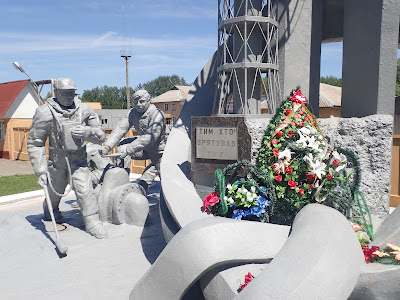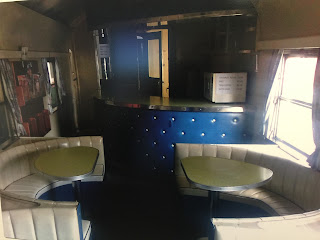There's no guarantee that travel will make a narrow-minded person less narrow-minded. However, travel does give me hope.
When I travel, I learn a lot; not just about history and architecture, but about the different ways that humans have found to organise their societies. History casts a light on this in any case, but the lived experience of people in the here and now fascinates me too.
Hopefully many who travel come back with a new perspective on their own societies, and their own lives, and are the richer - and more accepting - for that. We can but hope.
Having said that, here are my personal travel highlights from the year just gone.
1. Taking the Spirit of the Outback train to Longreach, Queensland, and visiting the Qantas Founders Museum.
There's plenty do and see in Longreach and, farther out, Winton.
I was particularly interested in the Qantas Founders Museum, whose exhibits led to an interesting revelation (for me at least)...
Which is: the reason commercial air travel had such an early start in remote Queensland was because roads through the grasslands would often bog down impassably after heavy rainfalls. Aircraft allowed people to leapfrog that obstacle, and thus became instantly popular in the region, even in aviation's relatively dangerous early days.
2. Bathing at the Kaifu-Bad in Hamburg, Germany.
 |
| Image courtesy of Kaifu-Bad. © Bernadette Grimmenstein + Bäderland_0624 |
I love the German tradition of all-nude mixed-gender bathhouses. There's something incredibly primal and freeing about them, stripping away (literally) all the pretence and titles of the outside world. They're also very relaxing.
On my last three trips to Germany I've visited a historic bathhouse at each of Cologne, Munich and Hamburg. Those visits culminated in this story for Fairfax Media.
3. Walking the alternative streets of Christiania, Denmark.
This was literally an insight into people experimenting in alternative ways to live. Christiania is a counter-culture enclave of Copenhagen, set up in the 1970s by squatters. In many ways it hasn't worked out the way they envisaged, but that itself is an interesting part of the story.
I wrote about my tour of Christiania here.
4. Visiting two tiny mosques in Poland.
The quiet green reaches of eastern Poland are probably the last place you'd expect to find a Muslim community, but it's there. Before the 18th century Poland was the hub of a vast European state, the Polish-Lithuanian Commonwealth, whose borders stretched toward the Black Sea.
During this period, Muslims from the Commonwealth's periphery were granted land by Polish kings in Poland's east. Centuries later there's still a community worshipping at the beautiful mosques at Bohiniki and Krusziniany, a reminder of the country's past ethnic and religious diversity.
5. Sleeping over in Chernobyl, Ukraine.
My most extraordinary experience this year was a two-day tour of Chernobyl soon after the 30th anniversary of its infamous nuclear disaster.
It was the first time I'd delved deeply into the day-to-day details of the crisis, and I was overwhelmed by the bravery of those who fought the unfolding catastrophe in the crucial first few days, with many sacrificing their lives. Without their efforts, the outcome could have been vastly worse.
The monument to emergency workers you can see above stands on the outskirts of the city. I wrote about the tour for Lonely Planet here.
6. Attending Comic-Con in San Diego, USA.
It was overwhelming, but I really enjoyed this huge pop culture event. Beyond the content of panels and workshops, the thing that really struck me was the diversity of the attendees.
There were people of every possible ethnic background dressing up as every fictional character under the sun - and dressing across gender as well. My favourite was the guy in the Wonder Woman outfit above, who became the star of my article for Fairfax Traveller.
It was inspirational to see such a diverse crowd surging around, enjoying their favourite fiction and sharing it with others. It was a great mood, and a partial antidote to the intolerance which seems to have edged back onto centre stage around the world this year. It gave me hope.
7. Dining in the Western Australian Outback via the Indian Pacific.
I caught the Indian Pacific train from Sydney to Perth in October, the first time I'd been aboard in five years. I was very impressed with the quality of the experience nowadays, especially the off-train excursions.
Simple as it was, my favourite activity was dinner on the third evening. We ate at tables set between the train and the derelict buildings of remote Rawlinna, Western Australia, as the sun set and an amazing star field emerged above. Magical.
So... how was your year in travel?
I was hosted on the trips mentioned above by the relevant tourism authorities and companies. This is my final post for 2016 (and the 450th overall on this blog!), so I'll wish you a Happy New Year now. See you in January 2017. Things can only get better... let's hope.

















































